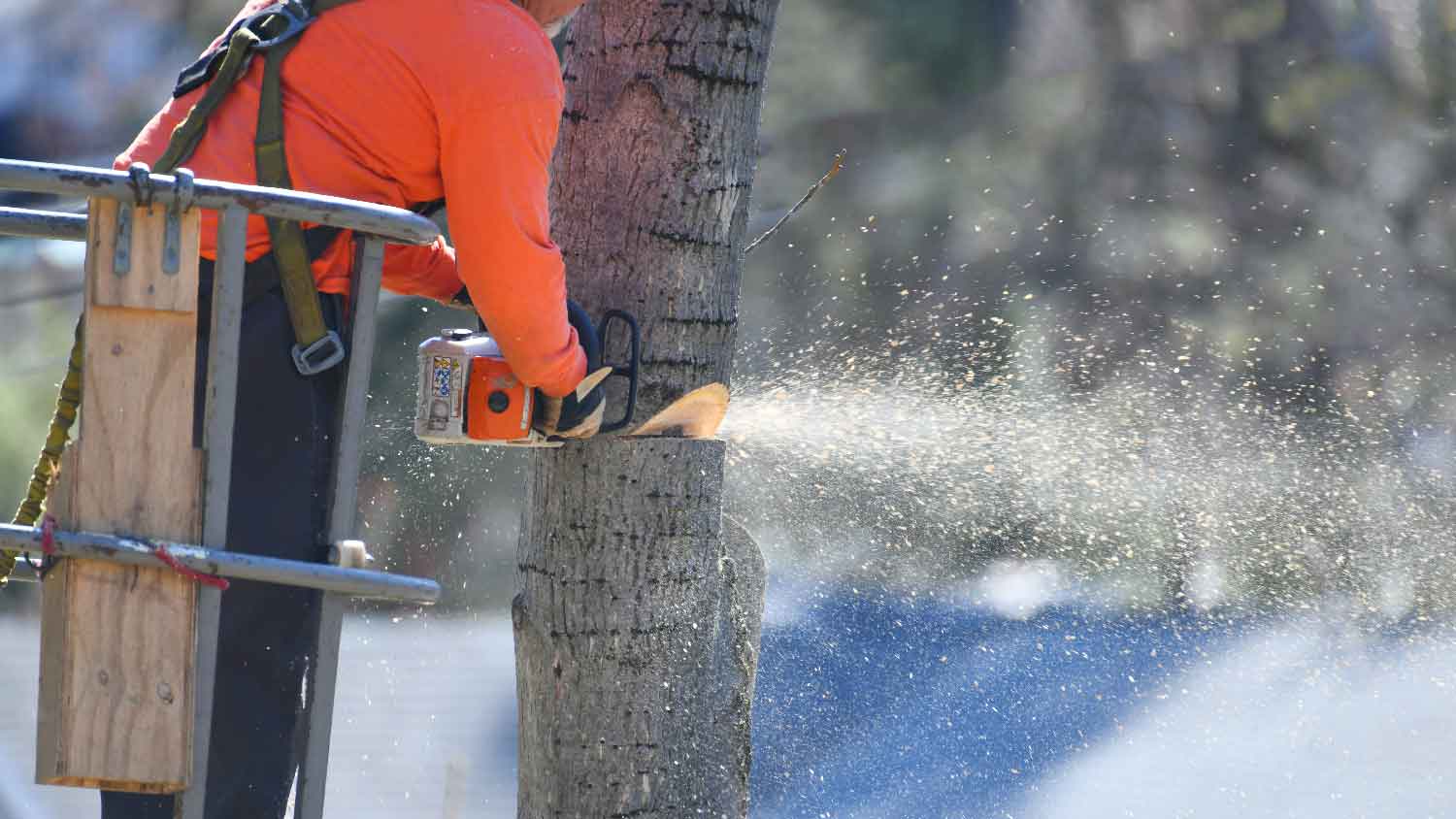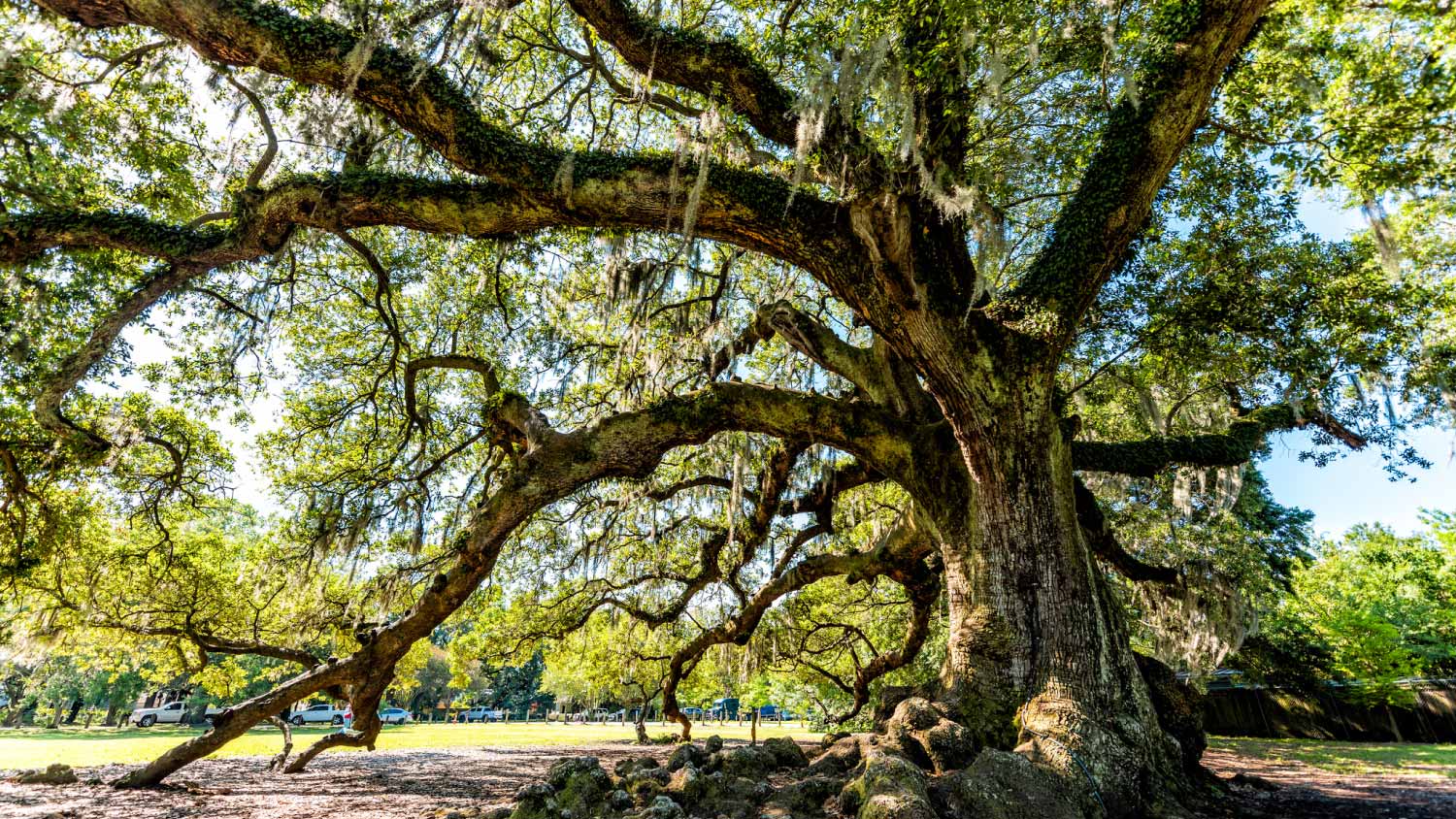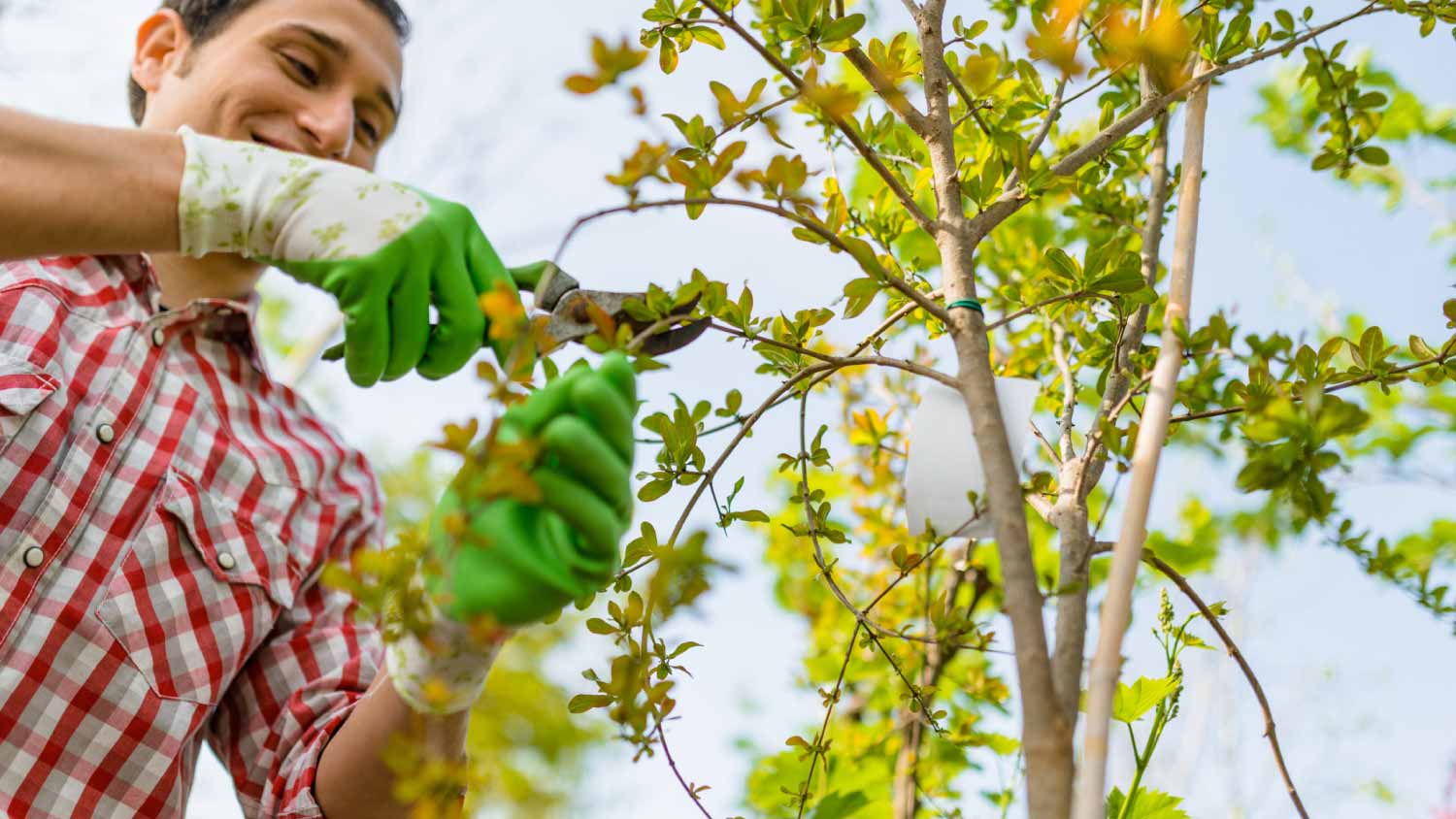
The cost of tree stump removal depends on size, removal method, location, and more. Our guide will show you how much stump removal costs.
Safely cutting down a tree requires guiding where it lands using a directional notch


A falling tree is a potentially deadly object that can easily weigh upwards of one ton. It’s essential to learn how to notch a tree before you attempt to cut one down, or you could injure yourself or others or cause significant property damage. By properly notching a tree, you create a hinge that will control its direction ensuring it lands without hurting anyone or damaging nearby structures or landscaping. There are many different methods for notching trees, each with its pros and cons.
Cutting down a tree is dangerous work. It involves using chainsaws to bring down towering timbers that can easily injure someone, demolish a car, or destroy someone’s living room. As an amateur, you may not be cutting down such massive trees, but your lack of knowledge means felling even a small tree can be risky. The best way to reduce that risk is to learn how to cut a notch that can help direct the tree to fall in a safe area.
A directional notch forms a hinge on the opposite side of the tree from the felling cut. With a proper notch and final felling cut, you can guide the tree to collapse slowly and safely in your desired direction.
When trimming trees, it's essential to prioritize safety by maintaining a safe distance from power lines, avoiding the potential fall path, and wearing protective gear. We strongly recommend hiring a professional tree service to trim large trees, given the significant safety risks.
There are many ways to cut a directional notch, and the right option varies based on the size of the tree, the type of wood, the slope of the ground, and the desired stump height.
The conventional notch, sometimes called the traditional cut, is many people’s go-to notch. Loggers have used it for hundreds of years because the axes used to make the cut are most effective when cutting notches with a 45-degree angle. Unfortunately, this notch only guides the tree halfway to the ground before breaking. At that point, the logger loses control over where the tree lands.
Now that chainsaws are the standard for cutting trees, the conventional notch is rarely the best option. However, it leaves you with a shorter tree stump than the other two commonly used methods and is sometimes the best choice for split-prone trees, which can break free from the stump earlier, reducing the likelihood of splitting.
In modern times, an open-face cut is usually preferable because these cuts allow for a wider angle, typically between 70 and 90 degrees. These wider notches offer greater control of the falling tree, as the trunk doesn’t usually break free from the stump until it is nearly grounded. Both conventional and open-face notches are good for flat spaces and those with a slight incline.
The Humboldt cut, sometimes called the inverse notch, is the best option for felling a tree on a slope, and it is often preferable when working with notably thick or tall trees. This cut is made using a wide 70- to 90- degree-angle. It differs from the open-face cut in that the Humboldt cut is horizontal up top, with an angled cut under the felling line, whereas the angle on the open-face cut is on top and the horizontal cut is level with or above the felling line. With the Humboldt cut’s downward angle, the tree can aim downward before breaking free from its hinge, minimizing the chance of it rolling down a hill.

Follow these important steps to preparing for notching a tree on your property.
Look at the tree and its surroundings to evaluate potential problems. Is its canopy mixed in with another tree? Are any overhead power lines, roads, homes, or other structures in the immediate area? Is the tree leaning substantially in the opposite direction it should be felled? In these complicated scenarios, you should hire a local tree service professional to cut down the tree for safety reasons. Also, take the time to verify if you need a permit to remove a tree from your property to follow local environmental codes.
When assembling the best tree-cutting tools, you’ll need a chainsaw to cut the notch. However, to use a chainsaw properly, you also need to have the correct safety gear, including:
A helmet with a face shield and ear protection
Chainsaw pants or chaps, ideally with Kevlar mesh
Chainsaw gloves with Kevlar to decrease the risk of cuts and padding to reduce vibrations
Steel-toed boots
A good rule of thumb is to fell trees in the direction they would naturally fall if blown over by the wind unless there is an obstacle in the way that makes this path unsafe. Start by determining if the tree is leaning. If so, it’s best to cut the notch in the direction of the lean since the tree already aims in that direction.
Similarly, assess the strength and direction of the wind, keeping in mind that it will affect the direction and speed the tree falls. If the wind is too strong (above 24 miles an hour), wait until it slows down to cut the tree. When the wind is blowing calmly enough to safely cut the tree, use its direction to help you decide where to place the notch whenever possible, as the wind can help knock over the tree.
Remove any tree branches, shrubs, and other obstacles immediately around the base of the trunk and in the tree’s projected landing area, as the tree could bounce off of these obstacles and change direction while falling.
Cut any branches on the trunk less than 6 feet high, as these could hit you while you cut the tree or cause the tree to change direction as it falls. Remove root protrusions that could complicate the felling.
Determine where you want to make the directional notch and the felling cut. You may opt to remove bark along the truck where you intend to work to make the wood easier to cut. Use the chainsaw to mark the stump height.
Whichever type of notch you choose, cut it lower than four feet off the ground whenever possible. Always go slow, paying careful attention while you cut.
Hold the chainsaw at a 45-degree angle and cut inwards until you reach about 20% to 25% of the tree’s diameter. Slow down regularly and check that the chainsaw is still at the correct angle.
Rotate the chainsaw until it is horizontal. Saw inwards until it meets the top cut. Go slowly to ensure the cuts meet exactly and cleanly with a 45-degree angle.
Make a felling cut that lines up with or just above the bottom cut.
Hold the chainsaw vertically above the stump height at a 60- to 80-degree angle and start cutting down. Slow periodically to ensure you’re maintaining the original angle.
Keep cutting until the saw is at the stump height and the cut goes through 20% to 25% of the trunk.
Saw the bottom horizontally, at a 20-degree angle, cutting slowly and carefully to meet the top cut at a clean 90-degree angle.
Avoid cutting the bottom too deeply and ensure they meet precisely to maximize your control over the felling direction.
Make the felling cut at or just above where the two cuts meet.
Hold the chainsaw horizontally and make a top cut that goes through 20% to 25% of the tree’s depth.
Rotate the chainsaw 45 degrees and cut upwards until you meet the initial cut. Ensure the cuts line up neatly and evenly.
Make a felling cut about an inch above the notch’s top cut.

Trees are usually larger and heavier than they look. Keeping yourself, others, and your property safe when felling a tree is essential.
Use the “ax trick” to get a good idea of how much space a tree will take up after it lands. Hold an ax vertically at arm’s length and back slowly away from the tree in your desired felling direction until the top of the handle reaches the top of the tree and the bottom appears to touch the base. At this point, you’re right where the top of the tree should land.
Measure the distance from that spot to the tree, then multiply the number by 2½ to account for the tree bouncing or flipping. Mark off an area this far from the tree in all directions and keep people and pets out of this area.
To keep yourself safe while removing a tree, ensure you have a safe escape route 105 degrees from where the tree is supposed to land. Do not plan to escape the opposite direction of the directional notch because trees sometimes fall backward toward the felling cut instead.
Having someone available to watch the tree while you work is crucial because you have to keep your eye on the chainsaw as you work. Ask one or more adults to assist you by looking out for falling branches or signs the tree may fall prematurely. Ensure they stand clear of the chainsaw, are familiar with the escape route, and wear protective eyewear and earwear.
Tree felling is incredibly dangerous, and things often go wrong, especially when the tree is over 10 feet tall, leaning away from the felling direction, or located on a slope or near roads or structures. Cutting at the correct placement, angle, and depth is essential to creating a functional directional notch.
Unless you have substantial experience felling trees, hire a local tree care service to remove your tree if any of the previously mentioned risks are present. Priced anywhere between $200 and $2,000, professional tree removal will cost more than the DIY route. But these contractors have the experience, equipment, and liability insurance to do the job with minimal risk.
Even cutting down a small tree is difficult, time-consuming, and potentially risky, so hiring a professional can still be worth it. If you have a friend or relative with firsthand experience, see if they will be willing to show you how to cut down a tree.
From average costs to expert advice, get all the answers you need to get your job done.

The cost of tree stump removal depends on size, removal method, location, and more. Our guide will show you how much stump removal costs.

The cost to remove palm trees depends on several factors, including their size, location, and more. Our guide shows the average palm tree removal costs.

Discover the average tree maintenance cost, key price factors, and tips to save. Get expert insights to plan your tree care budget with confidence.

Wondering how to kill oak roots but not trees? Follow these 6 tips to learn the best ways to handle oak roots without harming the tree itself.

Will a topped tree grow back? It’s possible, although this aggressive pruning can sometimes kill a tree. Here’s what you need to know about tree topping.

Wondering how to tell if a tree is overwatered or underwatered? This guide covers the signs to look out for and how to intervene.